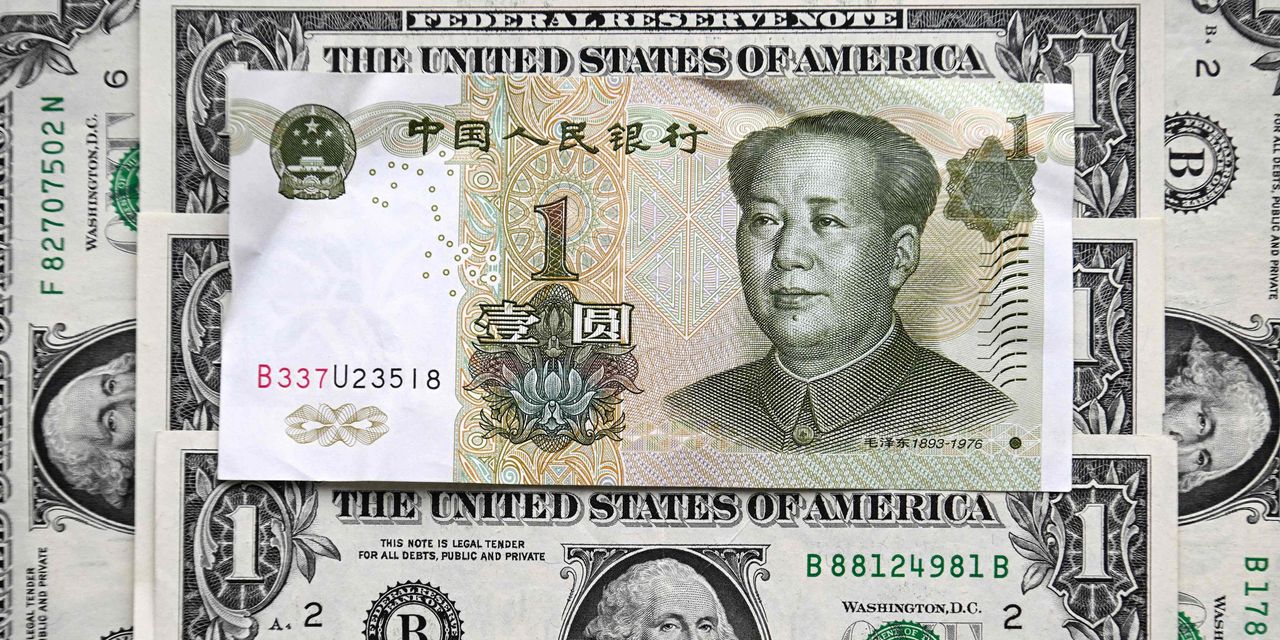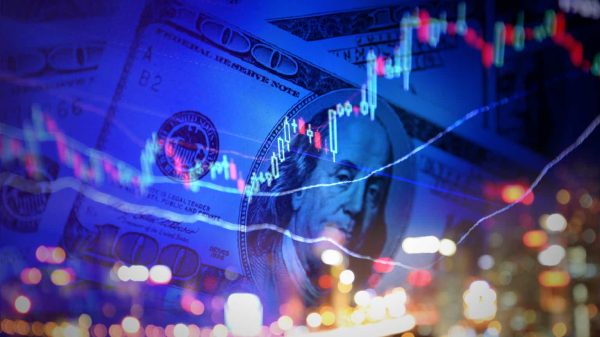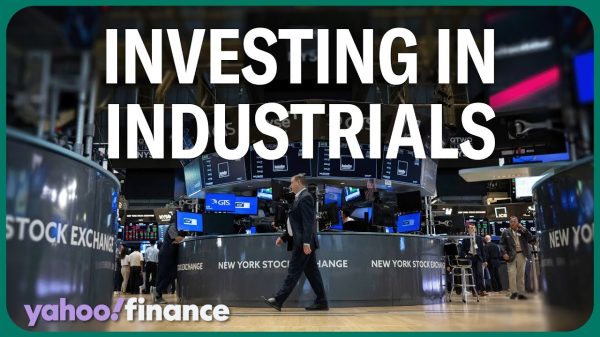The Chinese yuan hit a six-month low on Tuesday after the country’s central bank unexpectedly cut a series of policy interest rates to help boost market confidence and shore up a wobbly post-COVID economic recovery, revealing growing concerns among policymakers about the world’s second largest economy.
The yuan traded at 7.17 per dollar
USDCNH,
on Tuesday after the rate decisions, hovering at its weakest levels since last December and on the verge of breaching the keenly watched 7.2-per-dollar level, according to Dow Jones Market Data. Yields on China’s benchmark 10-year government bonds
AMBMKRM-10Y,
also fell to a 7.5-month low.
The People’s Bank of China (PBOC) cut its seven-day reverse repo rate by 10 basis points to 1.90% from 2.00% on Tuesday morning through a $280 million the short-term bond instrument. It was the bank’s first reduction in the rate since August 2022.
PBOC also said on late Tuesday it lowered rates on its standing lending facility (SLF), another type of loans that the PBOC lends to commercial banks to fulfill their temporary cash demand, by 10 basis points, effective June 13, with rates of overnight, 7-day and one-month SLF lowered to 2.75%, 2.90% and 3.25% respectively.
Market analysts think the surprising cuts to short-term policy rates, along with the cut in state-owned commercial banks’ deposit rates last week, are sending a strong signal that the PBOC is paving the way for more monetary easing ahead, which includes a reduction in medium-term lending facility (MLF) rate Thursday and loan prime rate (LPR) next Tuesday.
“On its own, a 10 bps cut [to the seven-day reverse repo rate] won’t make a great deal of difference to monetary conditions, but the PBOC tends to use changes in policy rates as signaling tool, with the heavy lifting being done by other tools such as adjustments to reserve requirements and bank loan quotas,” said Julian Evans-Pritchard, head of China economics at Capital Economics. “Today’s cut suggests that these tools will be deployed, too.”
However, Evans-Pritchard said the key unknown is whether increasing the supply of available credit will boost lending or, as was the case last year, the main constraint will be weak credit demand. “Businesses do appear slightly more willing to invest than when they faced the uncertainty of zero-Covid policy, but sentiment is still weak by historic standards,” he said.
That’s why in the absence of more forceful stimulus, which still looks unlikely, the near-term outlook will depend primarily on “the extent of second-round effects on consumer confidence and spending from the ongoing tightening of the labor market,” Evans-Pritchard said.
In April, China’s surveyed urban unemployment rate fell to 5.2%, compared with 5.3% in March. The youth unemployment rate, which covers workers aged 16 to 24 years old, hit a new high — nearly four times the national level — and there are signs it could get even worse in coming months as millions of new graduates enter the labor market over the summer, data from the National Bureau of Statistics showed.
PBOC’s unexpected move came at a time when major central banks around the world, despite having different political regimes and economic conditions, are also set to announce interest-rate decisions this week.
See: Skip, pause or hike? A guide to what is expected from the Fed on Wednesday.
The Federal Reserve on Wednesday is expected to stop raising interest rates for the first time over the past 15 months, leaving the main policy rate target in the range of 5% to 5.25%. Traders of Fed funds futures Tuesday see it as a “virtual certainty” following the latest reading on consumer-price inflation in the U.S., which showed price pressures eased in May to their lowest level in two years.
The European Central Bank (ECB) will announce its latest monetary policy decision Thursday, which affects borrowing costs across the eurozone trading bloc. The market consensus expects a rise in borrowing costs of 25 basis points.
Read the full article here











